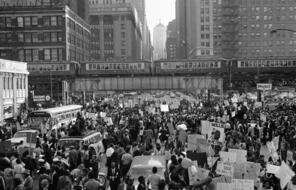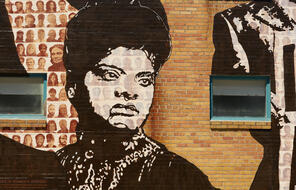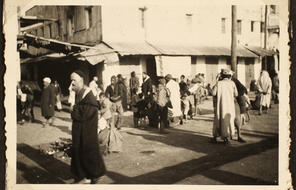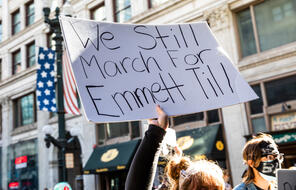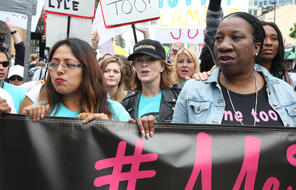The Nanjing Safety Zone
Subject
- History
Language
English — USUpdated
The Nanjing Safety Zone included the western district of the city from Nanjing University to the city’s northern gates. This included Ginling Women’s Arts and Science College, the American embassy, and various Chinese buildings. This small contingent of individuals working within a small geographic and physical space eventually became the caretakers of tens of thousands of Chinese during one of the most violent episodes in the opening phase of World War II in China. In addition to offering refuge for upwards of 200,000 Chinese during the occupation of the city from mid-December through its eventual dissolution at the end of February, the Nanjing Safety Zone served several other critical functions. After its committee members met with the civic leaders of the city at the end of November, it quickly became apparent to the Safety Zone Committee’s leadership that they would be shouldering many more civic responsibilities than originally imagined. 1
A week after this initial meeting, the entire city leadership and staff of the Nanjing government left the capital city, leaving behind both a large civilian population and a large number of Chinese soldiers to fend for themselves. In the absence of any civic leadership, Safety Zone Committee leaders stepped in and served as the city’s temporary government, organizing vital services such as police, utilities, fire department, food supply, and sanitation. The committee’s leadership also allowed for critical institutions to remain open, such as the three remaining hospitals led by the International Committee of the Red Cross.
Finally, the Safety Zone Committee fastidiously recorded the events and misconduct of soldiers through detailed documentation and letters. The first such letter, sent by John Rabe to the Japanese commander in Nanking on December 14, begins this invaluable documentary record. As the Japanese soldiers’ conduct quickly turned unlawful and violent, Safety Zone Committee members sent daily letters of protest directly to the Japanese embassy in Nanjing and to international organizations detailing numerous incidences of mass violence and rape. They also recorded every incident of Japanese misconduct as they heard it or witnessed it firsthand and delivered these regularly to the Japanese consulate. Records of food supply and security matters were also kept alongside a chronological compilation of atrocities committed. This extraordinary effort created a body of firsthand accounts that were published in newspapers and journals in the United States and Europe. In July 1938, the American publication Reader’s Digest published two stories detailing what was occurring in Nanjing, and by 1939, three bodies of materials and evidence were assembled and published by Chinese political scientist Hsu Shuhsi.
Tsen Shui-fang was a Chinese national working within the Nanjing Safety Zone. Along with several other Chinese men and women, Shui-fang chose to remain in Nanjing throughout the occupation. She was an assistant at Ginling College to American Minnie Vautrin, who directed the efforts to specifically protect women and girls from the Japanese soldiers. Shui-fang kept a daily diary documenting her experiences during the occupation of her homeland. The following are excerpts.
Friday, December 17th: Now it is midnight. I am sitting here to write this diary and cannot go to sleep because tonight I have experienced the taste of being a slave of a toppled country. . . . This kind of slavery life is very difficult to endure. If I were not struggling for the survival of our Chinese race, I would commit suicide. . . .
These several days, I have been frustrated to death, having no idea what’s going on with the war, no communication with the outside world. Embassies have no Westerners left. Not many Americans are here, and they are helpless. The refugees come here to seek shelter and insist on coming in. It really made me angry to death. It’s better not to let them in than see them being dragged from here; it is better not to see what happens to them outside. Each night, outside, every place is burning. . . . Why must Chinese people suffer like this? Today, several times soldiers went to the South Hill. I do not want to write any more. When thinking about the Chinese people, I cannot help but feel heartbroken. Another boy was born today.
Sunday, December 19th: Today at noon, Riggs came. He intended to ask married women with husbands to go home so the Japanese soldiers would not come [to Ginling] to find [women] so often. Because they have all run into refugees camps, no women are left outside. What [Riggs] meant was that it is okay for women with husbands to return home, but not for maidens. If a husband stays home alone, Japanese soldiers would accuse him of being a [Chinese] soldier because he has no family. Although there is nothing wrong with this reasoning, yet, as soon as I heard it, I cried. I thought that my own country is not strong, so it suffers this kind of humiliation. When can we shed the shame?
Tuesday, December 21st: The [Japanese] soldiers dispatched here last night were for protection in name only. They came to change shift. Vautrin thought that the officer was so nice to send people to protect [us]. In fact, he is resentful of losing face because no matter how [we] receive girls from [the] outside, the soldiers still come to take them away, day and night. I told Vautrin, “You should not forget that we are their enemies. You should not believe their sweet words.” What they say is not what they believe in their hearts. Now, they [the Westerners] all see every inhuman deed and empty words sweet words which the Japanese engaged in. Sometimes, when Vautrin went to the Japanese consulate to report their troops’ bad deeds, I said to her that the more you report, the more harm they would do. Fortunately, there are still two Germans here. Not adequate to have only Americans. Now, the several Americans are also helpless, deadly tired too. But, on the other hand, if there were not several Americans here, the Chinese would only face a death road. . . . 2
- 1On November 27, the committee met with Chiang Kai-shek and General Tang Shengzhi, the general in charge of defending Nanjing. Several days later, on December 1, the committee met with the mayor of Nanjing, Ma Chao-chun.
- 2Hu Hualing and Zhang Lianhong, The Undaunted Women of Nanking: The Wartime Diaries of Minnie Vautrin and Tsen Shui-fang (Carbondale, IL: Southern Illinois University Press, 2010), 35–79.
How to Cite This Reading
Facing History & Ourselves, “The Nanjing Safety Zone”, last updated November 30, 2018.

